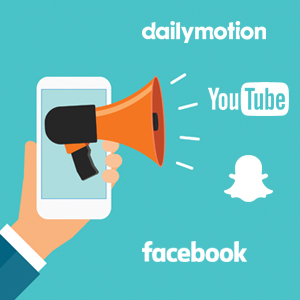The video landscape is always changing and we want to keep you ahead of the curve with every policy change and new technology launch. April was packed with major changes to some of your favorite platforms including YouTube, Facebook, and Snapchat. Here’s your monthly round-up just in case you missed it:
YouTube Makes Major Changes to its Creator-Focused Tools
Launched 5 years ago, YouTube’s Partner Program model has helped the website grow into the biggest video hosting platforms on the internet. Originally, the program was open to everyone, encouraging users to sign up for the service, start uploading their videos and begin generating revenue through monetization. Earlier this month, YouTube announced that it will be adding a minimum threshold of lifetime views (10k) on a specific channel before a creator can turn on monetization. Once a creator reaches the minimal threshold, their channel will be reviewed by YouTube before final approval. This new policy change was implemented to further protect users by weeding out accounts that posted content that is not their own as well as ensuring that any uploaded content conforms to YouTube’s community guidelines and advertiser policies.
In addition to updating the YouTube Partner Program, YouTube is lowering the subscriber requirement for users to monetize their live streams in order to drive traffic to its mobile app. Prior to this change, only users with 10,000 subscribers could monetize when they went live, today users with 1,000 subscribers will be able to use the service. As the popularity of live-streaming continues to grow across all social media, YouTube is trying to combat the efforts its competitors with its Super Chat feature which allows users to monetize their live streams by enables viewers to pay to pin their top comments. Creators that meet the minimum subscriber requirement will still need to verify their channel, prior to monetization.
Snapchat and Facebook Battle Over Augmented Reality
The war continues between social media giants, Snapchat and Facebook, as each platform unveiled its latest advancement in augmented reality within hours of each other. Snapchat made the initial move as it announced that its popular Snapchat Lenses feature was being added to the rear-facing camera on smartphones. Previously, Snapchat Lenses was only available for the front-facing camera without interactivity or 3D technology. Its new update will allow users to turn the lens onto the outside world and superimpose 3D effects over real-world photos/videos. On the heels of Snapchat’s announcement, Facebook announced the release of Facebook Spaces, a virtual reality app that allows users to hang out with friends in a fun and interactive virtual environment. Facebook Spaces enables users to create their own personalized avatar to engage with other users and with Facebook content. For example, users are able to view different 360° videos and photos that can transport them to new places.
As video technology continues to advance, we will provide you with all of the information you will need to take advantage of every trend to keep your content up-to-date. Make sure you follow our weekly blogs to the latest tech updates.
